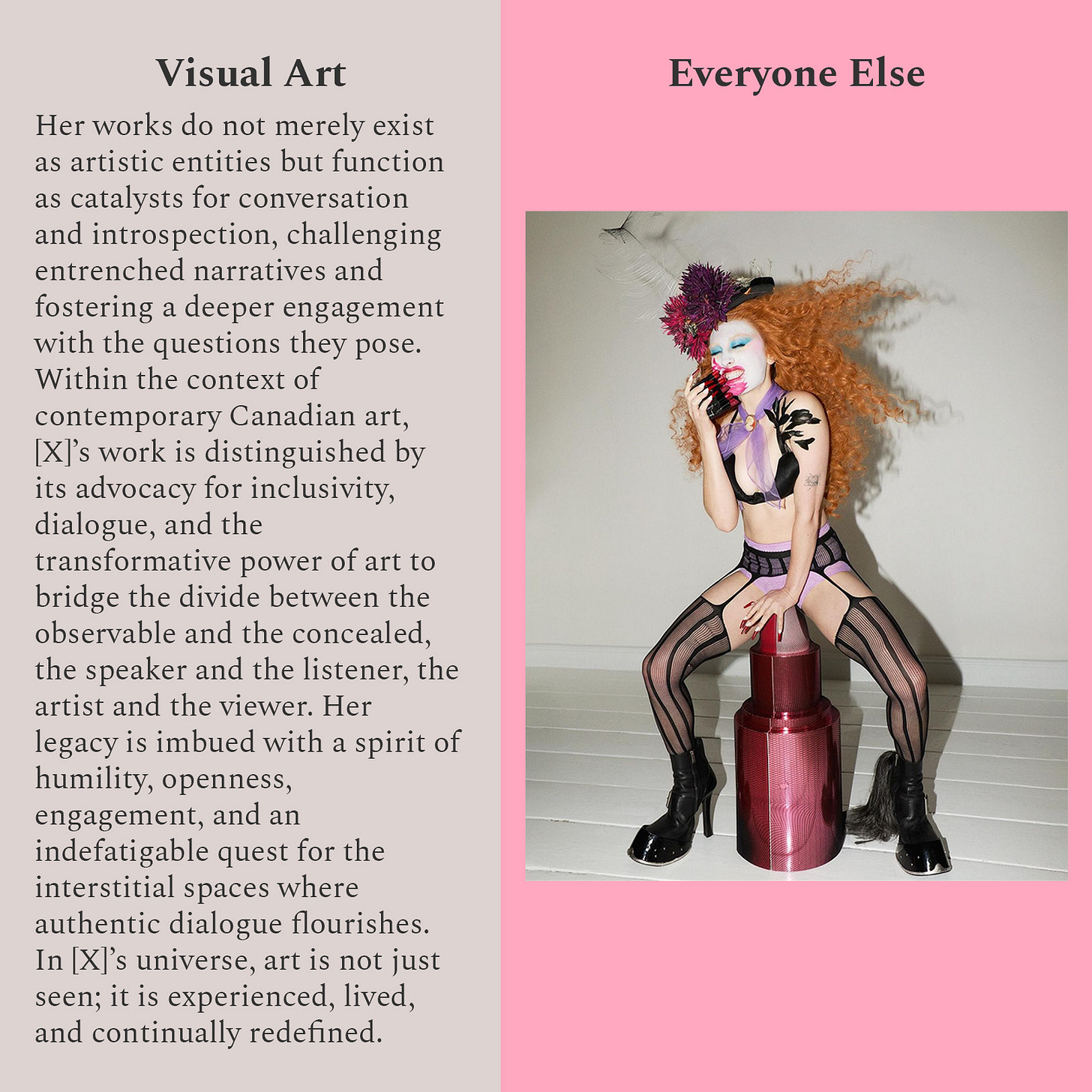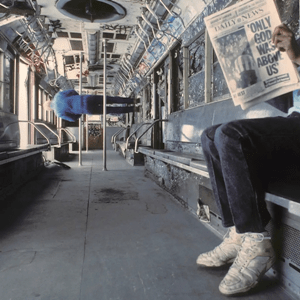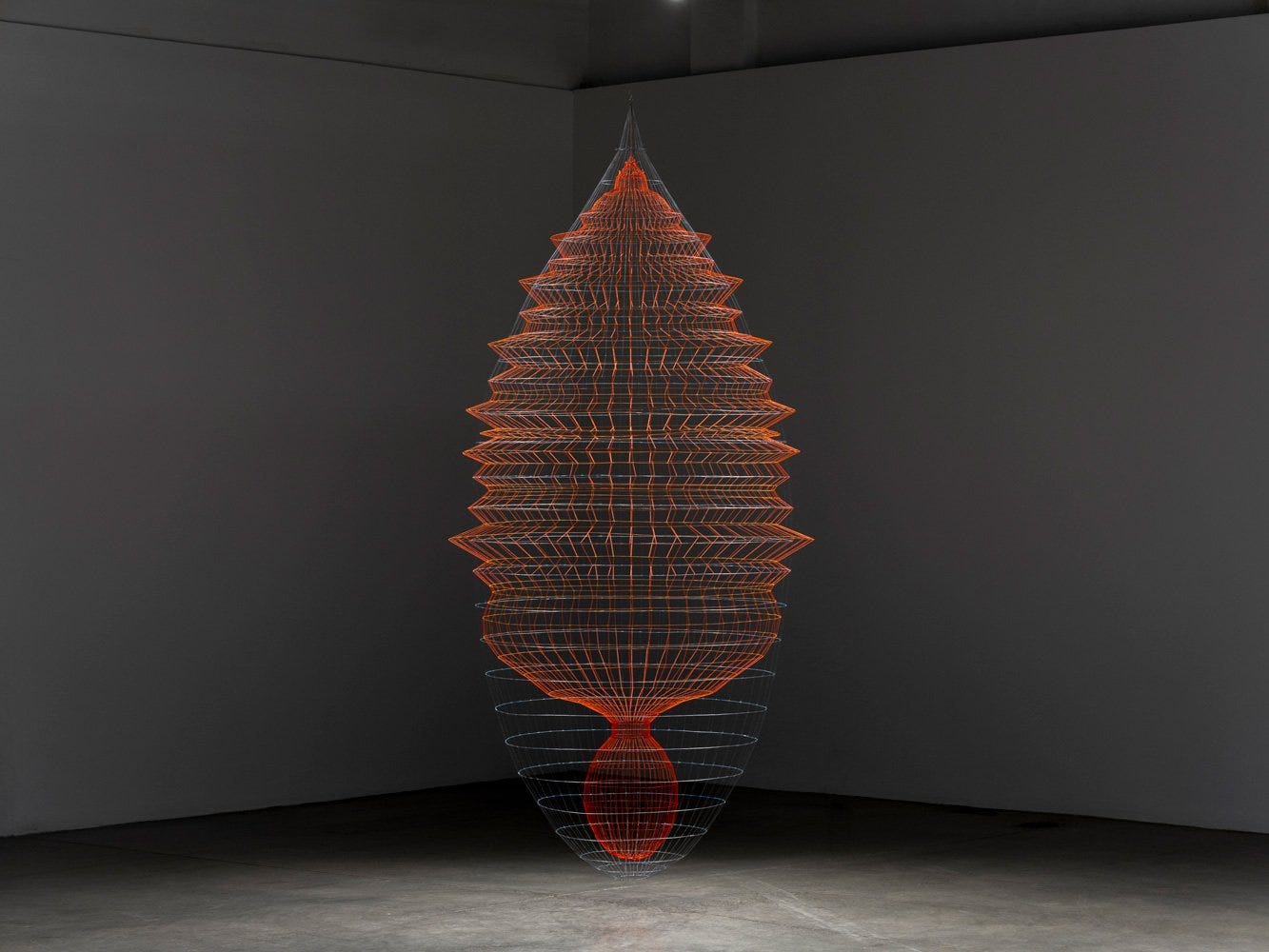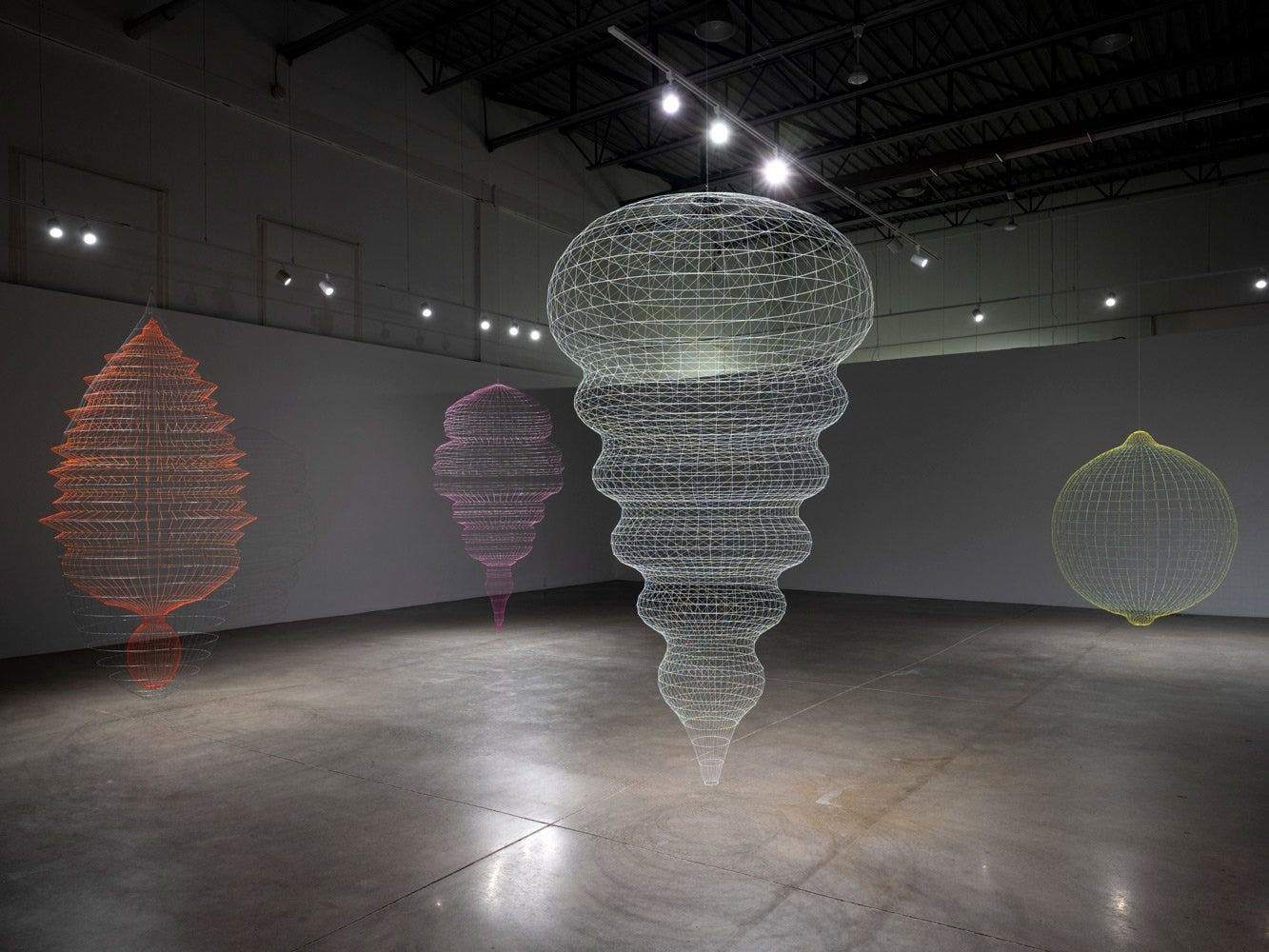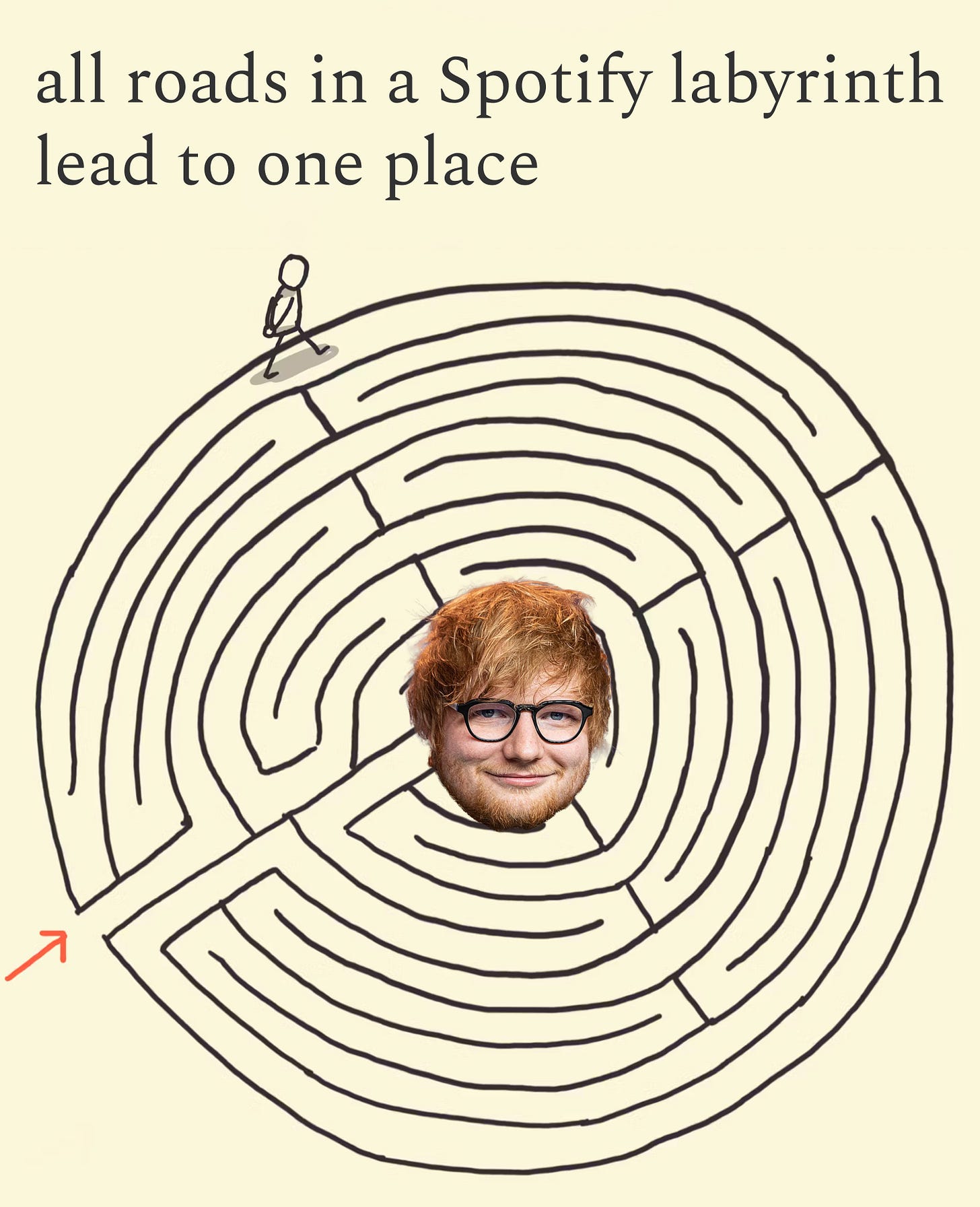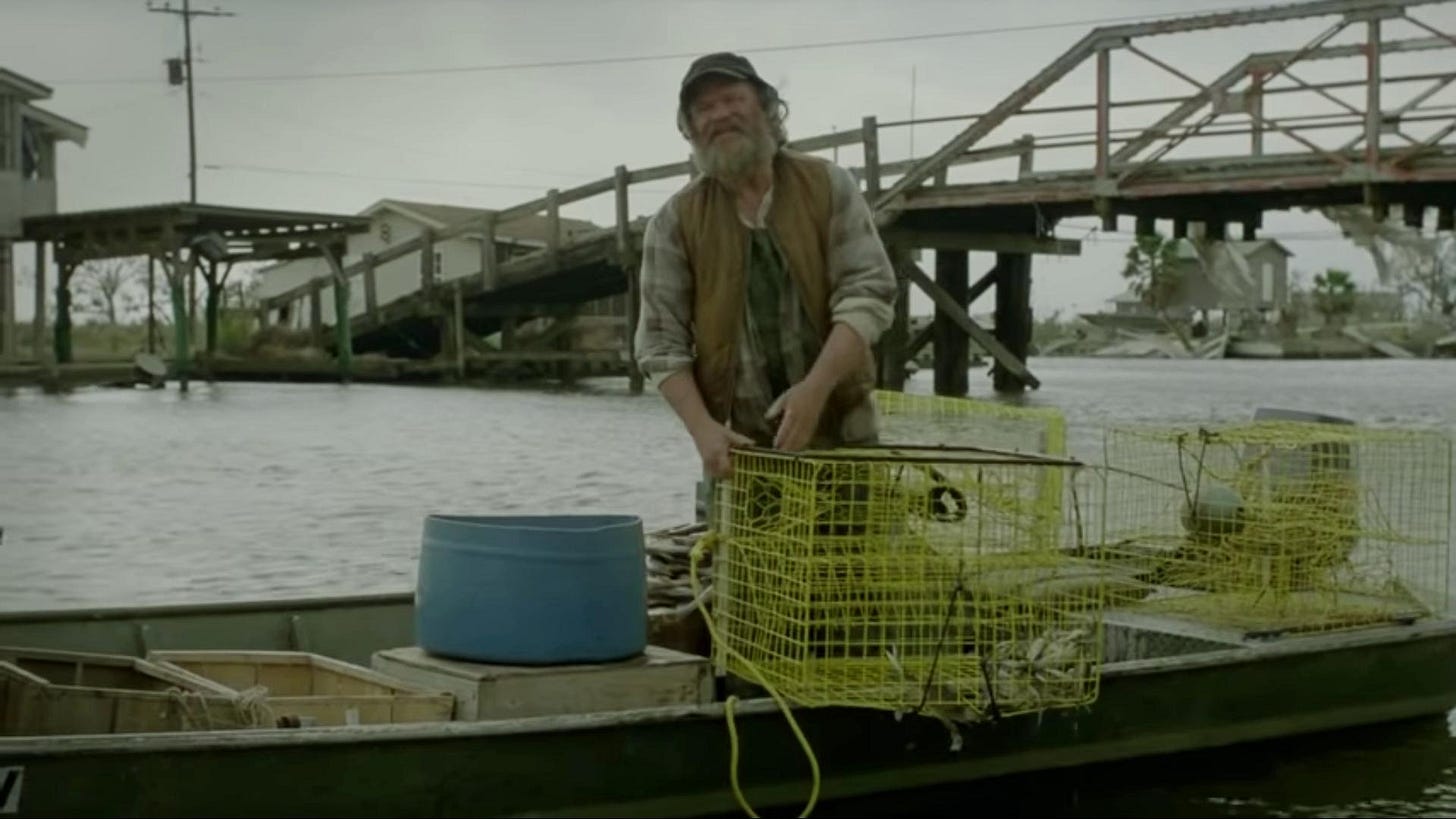a good relationship to art is like fly fishing
ditch the live bait and STRUGGLE
images courtesy of,
artist featured: Sarah Stevenson
gallery: Blouin Division
Sarah Stevenson
In the Eye
Blouin Division
July 6 - August 17, 2024
In today’s essay, we bid farewell to summer via:
reflections on the summer art landscape
my fav show of the season
documenting the crucial highs and lows of art-seeking
With most art patrons having the luxury to leave town over the summer months, galleries typically use this time to focus on Fall / Winter exhibitions. To satisfy us morons left in the city, they schedule a couple of group shows. This was my first time experiencing such programming under the lens of welktober.
Most of us associate summertime art with levity, romance, fun — particularly this year thanks to the takeover of pop girlies. But what I encountered in the industrial gallery districts of Toronto, Victoria, Halifax, on various smouldering July + August afternoons, was ZERO willingness to lighten up. From group exhibition to group exhibition, concepts remained heady and austere. Perhaps the greatest disappointment was that most of the thematic elements felt forced upon the art, rather than derived from it.
During those meandering mid-Summer days, I found myself wishing that art exhibitions would be more comfortable lacking purpose.
By the onset of August, sirens were starting to go off. welktober was in a bad state. I launched this dumb thing 2 months ago and was already out of material. Why is music serving? Why do movies and books vibe with summer so much more than visual art? Have I chained myself to a terminally stale and navel-gazing art form???
Now maybe you’re thinking, as I’ve thought: It’s f*cking summer, welktober. If you want simplicity, go touch grass. No one asked you to go these exhibitions.
But my response, and what is ultimately the crux of this essay, is that the above mundane melodrama, the low-points and frustrations, are my relationship with art. I love them and I cherish them, so let me wallow.
OK, back to mundanity.
An early August afternoon after 3 disappointing gallery visits. I dropped my bike in the grass at the Perth Avenue Parkette and hopped on a swing. I pumped my legs for a minute, joyfully concluding that swings should feature more often in my life, then stopped pumping, letting the chain creak to silence. The eerie vacancy of the city was present in those creaks.
It was time to give up my dejected search for inspiration. I opened Google Maps to get my route home. It told me that Blouin Division — saved to my gallery ToDo list — was around the corner. Normally, I have a hard cap of 3 galleries in a day, but summer is all about bending the rules (🤪).
So off I went.
Upon entering the dark room of Sarah Stevenson’s In the Eye exhibition, all crises were immediately settled. I was transfixed by the acrylic-painted orbs, daintily constructed from thread, fishing line, and wire, and found myself photographing and filming them from every angle, trying foolishly to capture their essence.
I stared at them for the better part of an hour before thinking to read about the art. Wonderfully, the exhibition text made no attempt to connect the work to any grandiose concept. From two straightforward paragraphs, a single line captured the notion of simplicity I sought:
voluminous forms, which have almost no substance.
I freaking love these orbs. They have lingered in my thoughts until now, a month later. I also remain wowed by the curation of this show — particularly how it stayed out of the art’s way and allowed it to (literally) glow. The selective lighting in the space gave the pieces an other-worldly radiance. Standing between them, in the airy room, I felt surrounded by those bioluminescent creatures of the dark ocean. Their unpredictable, free-hanging rotations, caused by tiny changes of pressure in the room, gave them sentience.
Whether it’s true or not, I felt an assurance that most anyone could walk into this space and feel connected to the work. This is a rare feeling in visual art.
A deeper look into Montreal artist Sarah Stevenson’s catalogue reveals plenty of captivating projects spanning almost three decades. An artist I will surely be following for a long time to come.
This fantastic exhibition did not come across my desk (Instagram). I saw no coverage of it in Toronto arts media. What it took for me to discover was weathering a volume of disappointments which ultimately dictated what I needed to find.
So what am I getting at???
The article linked here discusses the well-documented phenomenon by which we stop seeking new music (and by extension, other art), around our late 20s and early 30s, sticking with the tastes we’ve developed in the first third of life.
I know many people who are experiencing this. Some are terrified about losing touch with what’s new; others are perfectly okay with the process. While I don’t think either side of this spectrum is the ideal place to be, I (unsurprisingly) find the complacency of the latter more alarming than the anxiety of the former. What it ultimately reflects is an unwillingness to be disappointed.
This abandonment of searching can be extended to other reluctances which come with age: seeking new relationships, learning new skills, challenging closely-held beliefs. Yes, our brains are stiffening regardless, but this behaviour is doing the process no favours. It takes a concerted effort to break past algorithms, those in our noggin and those built by tech overlords, neither of which readily encourage us to step outside of our comfort zone.
Do you let Spotify do your music-seeking for you? If so, chances are that you’re being fed slightly blander versions of music you already listen to. On the first few listens, you think you’ve found something original. Then you start hearing the song in every coffee shop in the city. Quickly you tire of the song because there is nothing to digest; it is empty calories. Shortly after, everyone has moved on to something else.
The elements of consumption and servitude in my relationship with art-seeking are icky and unromantic (to me, also), with checklists and quotas, hierarchical folders and playlists, to-read to-watch to-listen notes, etc. But what this process facilitates is a volume of disappointment which keeps newness always around the corner. When something resonates, it is magnified by the failure beneath it. The cause of this resonance is somewhat irrelevant (in a different season, perhaps I would dismiss the Stevenson exhibition and connect with one of those higher-concept group shows). What matters is the force of resonance. The high does not exist without the low.
So, finally, arriving to the title of the essay: we might think of art-seeking as akin to fly fishing. Fly fishers hold the process sacred because they know that process is mostly all they get. They adapt through a combination of vibes / superstition, and failure: using the wrong flies, committing to dead pools, getting their lines caught in everything. The corollary of this process in art is building taste. Failing and failing again until finally holding a glorious, flopping fish for some minutes. The fish is returned to water, but a sense of achievement endures.
Not to mention that fly fishers, throughout this process, are venturing out to real, beautiful places, leaving behind the bite-sized speculation of screens or theories about where the best fish might be.
Conversely, if our art-seeking is as successful as bait fishing — almost every time we drop a line, it picks something up — we are not developing taste. We are trying the same Pinot over and over (Meiomi, probably). Nothing forcefully stands out.
Now it is Fall. The glut of exhibitions is over. An overwhelming volume of programming has been announced. And whilst excited for this avalanche of inspiration, schools of cod off the Newfoundland coast, I look equally, and more securely, forward to silent waters and uninspired days, where the art I need is elusive as Sarah Stevenson’s fantastical orbs.



